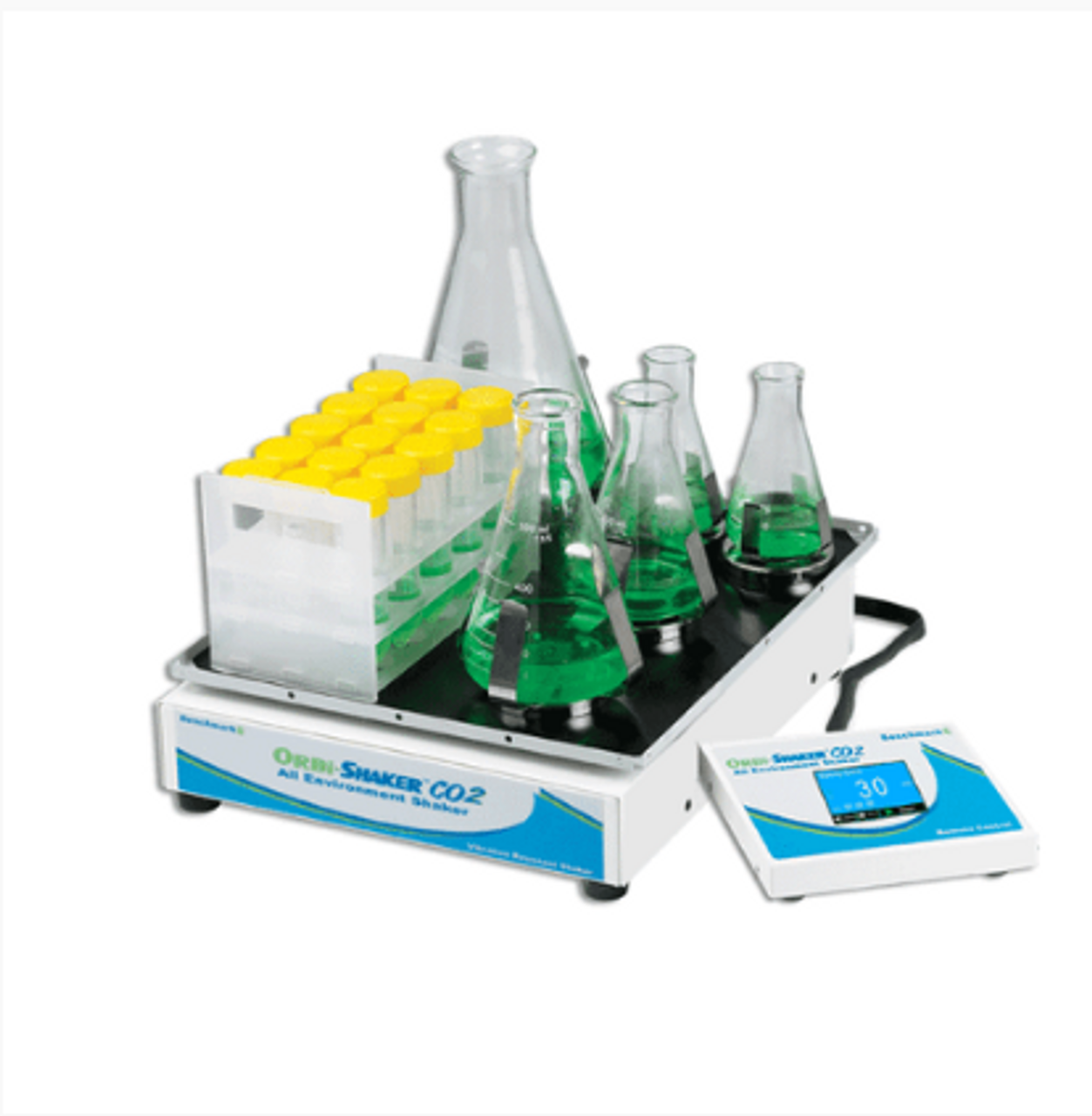Why would I want to use equipment inside of a CO2 incubator in the first place?
All cell culture scientists know that the incubator is the key to maintaining biological conditions for cells.
Your typical CO2 incubator allows the growth of cultures by using constant humidity, temperature, and gas concentrations.
A water bath inside the incubator provides 95% humidity and temperatures of 37°C, and CO2 is added to promote a neutral pH.
For most purposes, these parameters are capable of meeting the researcher’s needs.
However, there are some situations where a culture may need extra motion, like during the production of recombinant proteins and other processes that require enhanced exchange between cells and the surrounding media.
These applications may require the use of equipment such as orbital shakers, magnetic stirrers, or tube rollers.
When should I avoid using equipment in a CO2 incubator?
In most cases, it is best to avoid placing equipment inside of a CO2 incubator because it introduces unnecessary contamination risk and could throw off other variables in your experiment.
As a general rule of thumb, if you wouldn’t put your mouth on it, it isn’t clean enough for your cell cultures.
What makes a piece of laboratory equipment safe and appropriate to operate within a CO2 incubator?
CO2 incubators impose limitations on equipment in cell culture experiments
CO2 incubators are used in cell culture laboratories to provide a controlled environment for cell culture growth and stability, but they require careful technique in order to prevent contamination of sensitive cultures.
Not all lab equipment is made to run inside an incubator…
Some of the things to consider when deciding whether or not you should use a piece of equipment in an incubator include how easily you can set up, clean and sterilize equipment, and whether or not the equipment needs to be monitored during use.
Any piece of equipment that is difficult to maneuver or run within the CO2 incubator poses a contamination threat to your work.
The handler should be able to maneuver around the equipment without touching other objects or the sides of the incubator, and the equipment must be able to complete all necessary motions.
Incubators are not always designed with other types of equipment in mind. Yet another potential concern with equipment is how to power it within an incubator.
Not every piece of lab equipment will fit inside of an incubator!
So in summary, this is just a lot of basic common sense stuff that you probably thought about already and wanted to hear from someone else first.
What kind of equipment can I use inside of a CO2 incubator, and what parameters do I need to look at when choosing?
CO2 incubators have higher temperature and humidity than the surrounding laboratory environment, so not just any piece of equipment can be placed inside of the incubator.
Humidity may cause condensation on equipment, and increased temperature may cause malfunctions.
Additionally, the motion introduced by the use of shakers and stirrers can sometimes increase the heat in the culture environment.
For this reason, equipment that is used in CO2 incubators must be capable of minimizing heat dissipation. This is a special feature that equipment designed specifically for CO2 use has!
It may also surprise you to find that not all devices that are built for use in CO2 incubators are able to withstand the exact same range of temperature and humidity, so knowing all of the factors unique to your experiments is important when choosing.
CO2 resistant orbital shakers for your cell culture experiments
At Stellar Scientific, we carry a variety of equipment that can be used in cell culture incubators. We carry orbital shakers for all types of cell culture containers, from flasks to microplates.
Shakers like the Benchmark Scientific Orbi-Shaker CO2 BT4001 and the Benchmark Scientific Orbi-Shaker CO2 XL BT4011 include a remote control device to eliminate the need to open the incubator during your experiments.
The Benchmark Scientific Orbi-Shaker CO2 BT4001 and the Benchmark Scientific Orbi-Shaker CO2 XL BT4011 are designed to work at temperatures from 0°C-60°C and up to 100% humidity, and both shakers offer a MAGic Clamp™ platform for experiments that require shaking over 120 rpm.
The Orbi-Shaker CO2-MP is designed for use with microplates and can operate at temperatures up to 65°C and features a small orbit range that makes it easy to use inside an incubator.
What if I need something other than a shaker, what can I use?
We also carry temperature resistant magnetic stirring plates and tube rollers that may be suitable for use in wet or dry incubators, depending on the needs of the researcher.
It is always best to check first to see what your protocol requires and before purchasing equipment that is not made for CO2 use, just in case the process is capable of destabilizing culture conditions if the equipment is NOT CO2 resistant.
No one likes to make their cell cultures angry.
Do I need to use CO2 resistant shakers or rollers for my experiment, or are there other options?
It’s important to keep in mind that alternatives to CO2 resistant products exist, such as dedicated tabletop shaker-incubators like the Benchmark Scientific Incu-Shaker™ 10L H2010.
Although these types of equipment are more costly and may add steps to your workflow, they may be necessary when other equipment is not compatible with your existing laboratory needs.


